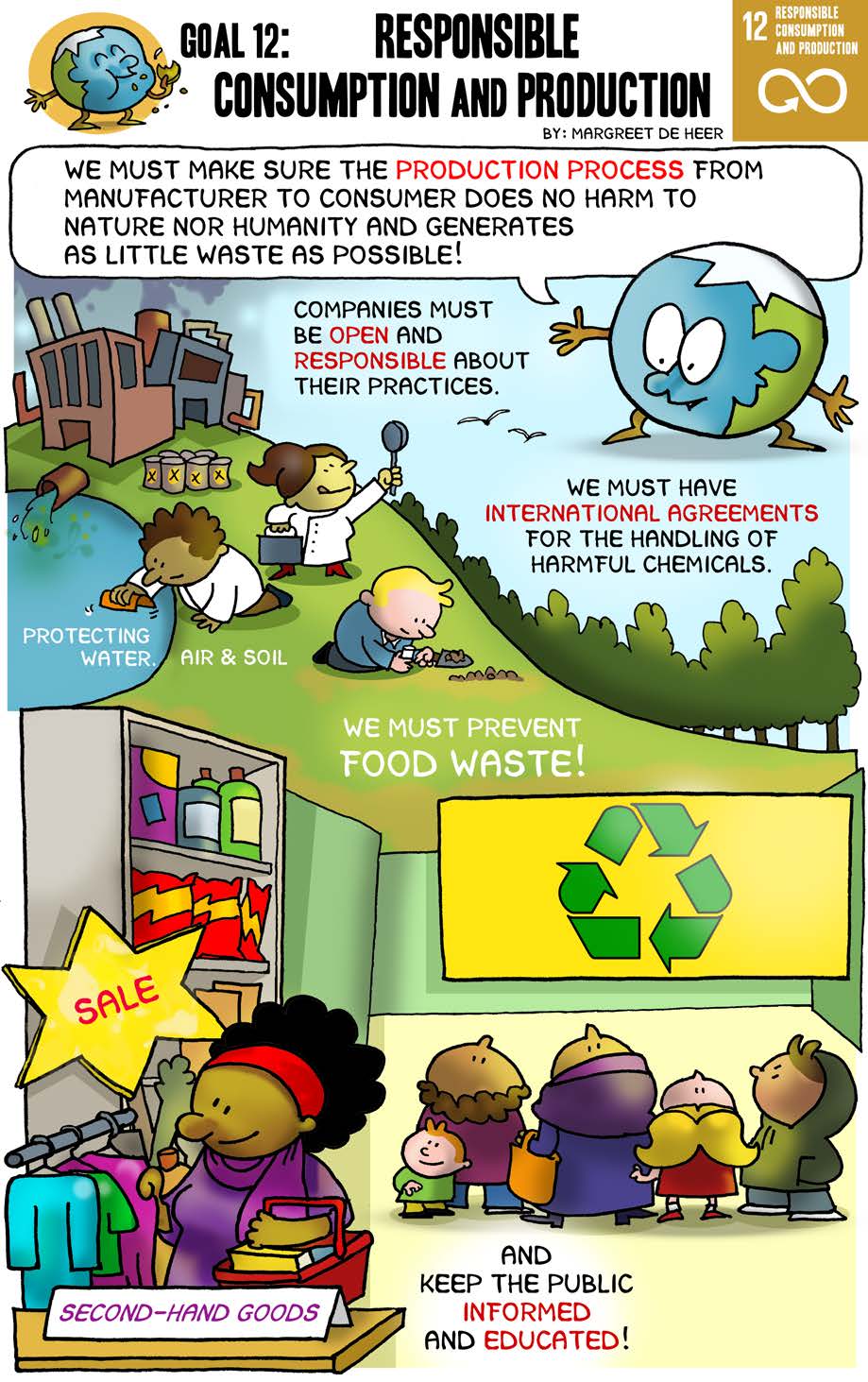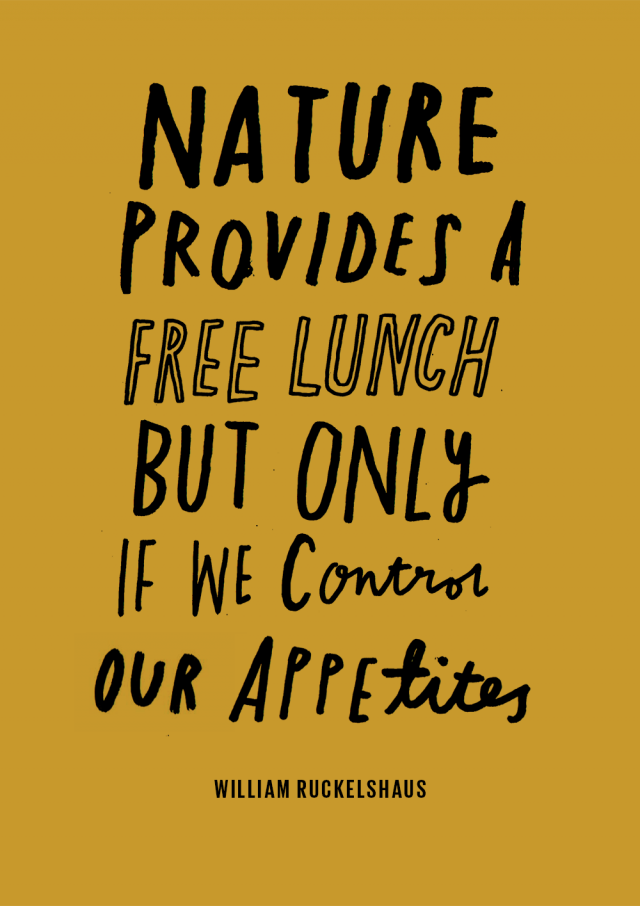12. Responsible Consumption

Ensure sustainable consumption and production patterns
Why It Matters

Why It Matters
Sustainable consumption and production is about promoting resource and energy efficiency, sustainable infrastructure, and providing access to basic services, green and decent jobs and a better quality of life for all. Its implementation helps to achieve overall development plans, reduce future economic, environmental and social costs, strengthen economic competitiveness and reduce poverty.
Facts & Figures

Facts & Figures
- Each year, an estimated one third of all food produced – equivalent to 1.3 billion tonnes worth around $1 trillion – ends up rotting in the bins of consumers and retailers, or spoiling due to poor transportation and harvesting practices
- If people worldwide switched to energy efficient lightbulbs the world would save US$120 billion annually
- Should the global population reach 9.6 billion by 2050, the equivalent of almost three planets could be required to provide the natural resources needed to sustain current lifestyles
Water
- Less than 3 per cent of the world’s water is fresh (drinkable), of which 2.5 per cent is frozen in the Antarctica, Arctic and glaciers. Humanity must therefore rely on 0.5 per cent for all of man’s ecosystem’s and fresh water needs.
- Man is polluting water faster than nature can recycle and purify water in rivers and lakes.
- More than 1 billion people still do not have access to fresh water.
- Excessive use of water contributes to the global water stress.
- Water is free from nature but the infrastructure needed to deliver it is expensive.
Energy
- Despite technological advances that have promoted energy efficiency gains, energy use in OECD countries will continue to grow another 35 per cent by 2020. Commercial and residential energy use is the second most rapidly growing area of global energy use after transport.
- In 2002 the motor vehicle stock in OECD countries was 550 million vehicles (75 per cent of which were personal cars). A 32 per cent increase in vehicle ownership is expected by 2020. At the same time, motor vehicle kilometres are projected to increase by 40 per cent and global air travel is projected to triple in the same period.
- Households consume 29 per cent of global energy and consequently contribute to 21 per cent of resultant CO2 emissions.
- One-fifth of the world’s final energy consumption in 2013 was from renewables.
Food
- While substantial environmental impacts from food occur in the production phase (agriculture, food processing), households influence these impacts through their dietary choices and habits. This consequently affects the environment through food-related energy consumption and waste generation.
- 1.3 billion tonnes of food is wasted every year while almost 1 billion people go undernourished and another 1 billion hungry.
- Overconsumption of food is detrimental to our health and the environment.
- 2 billion people globally are overweight or obese.
- Land degradation, declining soil fertility, unsustainable water use, overfishing and marine environment degradation are all lessening the ability of the natural resource base to supply food.
- The food sector accounts for around 30 per cent of the world’s total energy consumption and accounts for around 22 per cent of total Greenhouse Gas emissions.
Targets

Targets
• Halve the amount of global food waste per person, by individuals and companies.
• Ensure that, international agreements for handling harmful chemicals are met, taking care of the air, water and soil.
• Reduce the generation of waste through the three Rs: Reduce, Reuse, and Recycle.
• Ensure large companies’ practices are responsible, open and environmentally sound.
• Keep the public informed and educated, and provide the tools to live in harmony with nature for sustainable lifestyles.
Take Action

Take Action
- Reduce, reuse, recycle.
- Buy minimally packaged goods.
- Be thoughtful about what you buy and choose a sustainable option whenever possible.
- Consume only sustainable seafood.
- Reducing your consumption of plastic— one of the main pollutants of the ocean. Refuse to use plastic straws, and recycling plastic bottles. Stop using plastic bags. Bring your own bag when you shop and support legislation to ban plastic bags.
- Support businesses that have sustainable practices in place. This means that they have fair conditions for their workers, and that they don't harm the environment.
- Businesses’ need better understanding of environmental and social impacts of products and services, both of product life cycles and how these are affected by use within lifestyles. Identifying “hot spots” within the value chain where interventions have the greatest potential to improve the environmental and social impact of the system as a whole is a crucial. Businesses can also use their innovative power to design solutions that can both enable and inspire individuals to lead more sustainable lifestyles, reducing impacts and improving well-being.